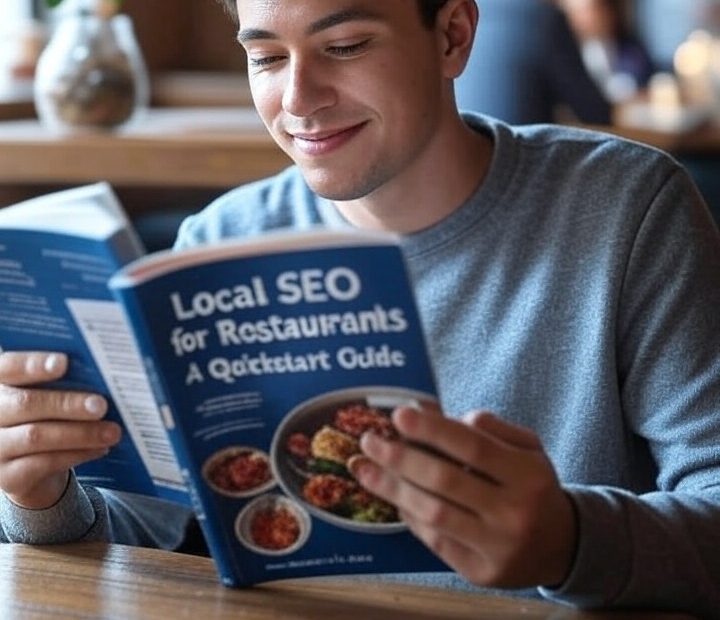In 2025, local search is how hungry customers discover new places to eat. If your restaurant isn’t showing up on Google when someone types “best pizza near me” or “vegan restaurant in [city],” you’re missing out on a huge chunk of foot traffic and online orders.
Fortunately, Local SEO can help your restaurant appear at the top of those crucial searches. This quickstart guide will walk you through the essentials of Local SEO for restaurants — so you can start attracting more nearby diners fast.
What Is Local SEO for Restaurants?
Local SEO (Search Engine Optimization) is the process of optimizing your restaurant’s online presence to rank higher in search results when people search for food or dining options in your area.
Unlike general SEO, which targets national or global audiences, local SEO focuses on attracting customers in your geographic area—those who are most likely to walk into your restaurant, place a pickup order, or make a reservation.
Why Local SEO Matters for Restaurants
In 2025:
-
Over 80% of diners search online before choosing where to eat.
-
Google Maps and “near me” searches dominate restaurant discovery.
-
Mobile searchers expect fast results, accurate info, and proximity.
If your restaurant ranks high in local searches, it leads to:
-
More walk-ins
-
Increased reservations
-
More online orders
-
Higher visibility in Google Maps
🍽️ Quickstart Guide to Local SEO for Restaurants
1. Claim and Optimize Your Google Business Profile
Your Google Business Profile (GBP) is the cornerstone of local SEO. It’s what shows up on Google Maps, in the Local Pack, and on the right-hand panel of Google search.
Steps to optimize:
-
Claim and verify your GBP at google.com/business
-
Ensure your restaurant name, address, and phone number (NAP) are accurate
-
Add business hours, including holiday schedules
-
Upload high-quality photos of food, interiors, menus, and staff
-
Use your primary category (e.g., “Italian Restaurant”) wisely and add relevant secondary categories
-
Use the menu and reservation links
-
Post updates regularly — new dishes, events, promotions
Pro Tip: Add local keywords like “family-friendly restaurant in Brooklyn” or “best BBQ near Austin downtown” in your business description and posts.
2. Add Your Restaurant to Online Directories
Apart from Google, your restaurant needs consistent listings across multiple platforms to build authority.
Must-have listings:
-
Yelp
-
TripAdvisor
-
OpenTable
-
Zomato
-
Bing Places
-
Apple Maps
-
Facebook Business
Ensure your NAP information is exactly the same across every platform. This boosts your credibility in Google’s eyes.
3. Optimize Your Website for Local Search
Your website still plays a major role in your SEO rankings.
On-page SEO Tips:
-
Include your city, neighborhood, or street in page titles, meta descriptions, headers, and content
-
Create a dedicated “Contact Us” page with embedded Google Maps and directions
-
Use schema markup for LocalBusiness and Restaurant to help Google understand your info better
-
Highlight local events, partnerships, or community involvement on your blog or news section
Mobile-friendly & fast-loading sites are a must — most diners are searching from smartphones.
4. Get More Customer Reviews (and Respond to Them!)
Reviews play a huge role in Local Pack rankings and user trust.
How to get more reviews:
-
Ask satisfied customers directly (verbally or via receipt message)
-
Use QR codes that link to your GBP review page
-
Add “Leave us a review” links in your confirmation emails or receipts
Best practices:
-
Respond to every review — thank happy customers and politely address concerns
-
Use local or food-related keywords in responses (e.g., “Thanks for trying our Detroit-style pizza in Midtown!”)
5. Use Local Keywords Strategically
Conduct local keyword research using tools like Google Keyword Planner or Ubersuggest. Look for long-tail phrases like:
-
“Best Mexican food in downtown Tampa”
-
“Rooftop brunch East Village NYC”
-
“Vegan breakfast near Santa Monica Pier”
Use these in:
-
Page titles
-
Meta descriptions
-
H1/H2 headers
-
Alt text of images
-
Blog content or food descriptions
6. Leverage Social Media with a Local Focus
Social media helps your local SEO indirectly by driving traffic, building brand awareness, and increasing engagement.
Tips:
-
Tag your location in every post
-
Use city/neighborhood hashtags (e.g., #DenverEats, #SoHoBrunch)
-
Share user-generated content from local patrons
-
Highlight staff, chefs, or behind-the-scenes views that feel personal and local
7. Add an Online Menu & Reservation System
A digital menu that’s easy to access (and indexed by Google) improves usability and relevance.
Make sure:
-
Your menu is readable (not just a PDF)
-
Prices, items, and dietary options are clear
-
It includes keyword-rich dish descriptions
-
You link to ordering platforms or reservation services (like OpenTable, Toast, or ChowNow)
8. Track Your Local SEO Performance
Use tools like:
-
Google Analytics 4 to track website visits and location-based traffic
-
Google Search Console to view keywords and search performance
-
Google Business Profile Insights for customer actions (calls, directions, website clicks)
Knowing what’s working allows you to refine your strategy for better results.
🚫 Common Mistakes to Avoid
-
❌ Using outdated or inconsistent contact info
-
❌ Ignoring negative reviews or failing to respond
-
❌ Not optimizing your mobile site
-
❌ Keyword stuffing your business name (against Google guidelines)
-
❌ Neglecting local citations
Final Bite: Local SEO Is the Secret Ingredient
In the digital dining era, visibility is everything. With people increasingly relying on Google, maps, and voice search to find places to eat, restaurants that ignore Local SEO fall behind.
By following this quickstart guide, your restaurant will be better positioned to attract new diners — both online and in-person — in 2025 and beyond.
Whether you’re a single-location eatery or part of a growing franchise, local SEO can help you fill tables faster and grow sustainably.
Also, you can learn more about Local Finder Results here.
